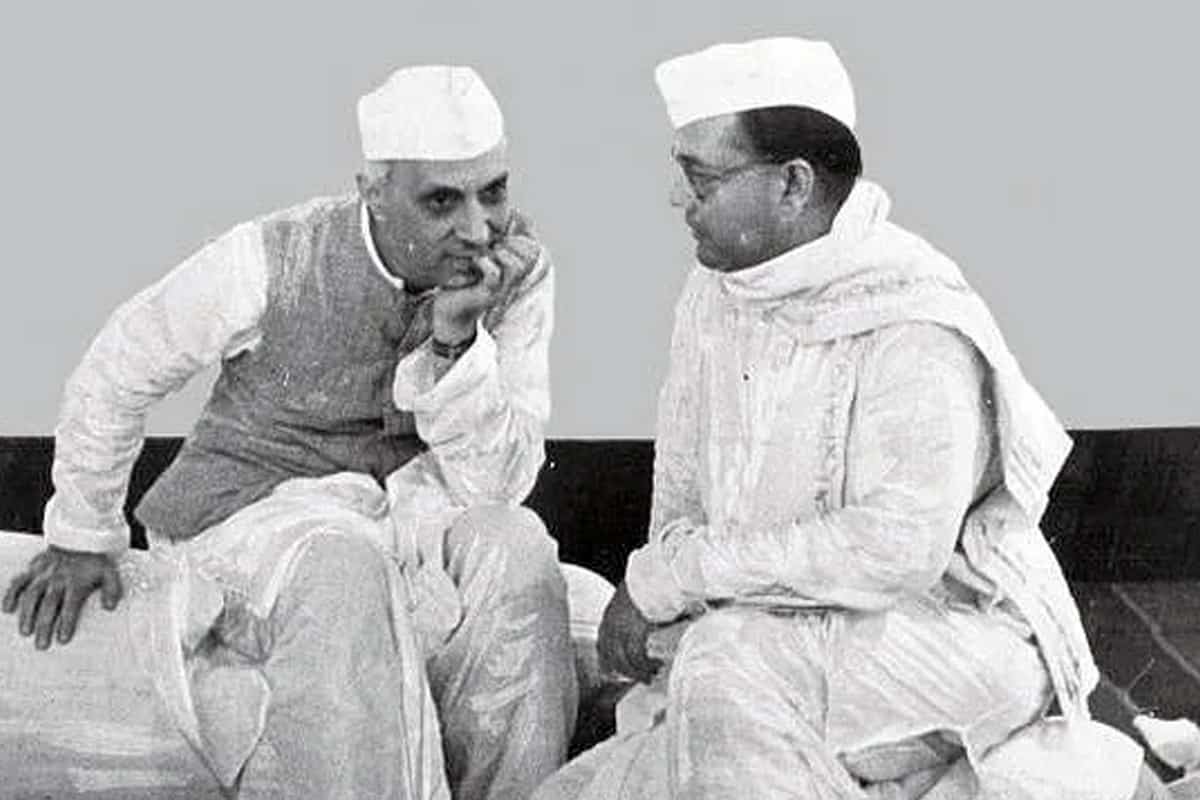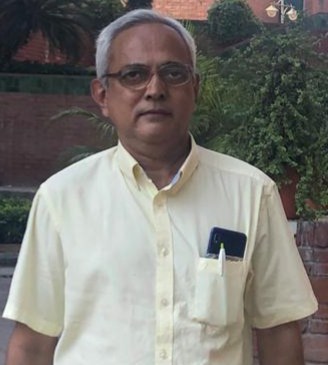

Netaji Subhash Chandra Bose was among the most charismatic figures of the Freedom Struggle, along with Pandit Jawaharlal Nehru. Essentially a Congressman at heart, Bose shared with Nehru a common ideological vision and, being Young Turks in the Congress, both shared a rare bonding. What was more, both were primarily devoted to Mahatma Gandhi.
Mahatma Gandhi, Pandit Jawaharlal Nehru and Subhash Chandra Bose had a perfect understanding. Their differences never overshadowed their respect and regard for each other.
Netaji Subhash Chandra Bose 125 Birth Anniversary falls on January 23, which also coincides with 75 years of Indian Independence. Born on January 23, 1897, Subhash Chandra Bose studied in the Ravenshaw College, now University, in Cuttack in Odisha. He went on to get selected for the Indian Civil Service (ICS). But he quit ICS and took the plunge in the Freedom Struggle, by joining the Congress.
Bose was mentored by Deshbandhu Chitta Ranjan Das in the Congress. After the demise of C R Das, Bose became close with Jawaharlal Nehru, working in tandem in the party.
In terms of popularity, Subhash Chandra Bose was next only to Mahatma Gandhi, within the Congress. The Idea of India of Bose was no different from the Idea of India of Mahatma Gandhi and Jawaharlal Nehru. Bose remained an essential Congressman till the last breath of his life, although he did change the tactics to attain the goal, which was the goal of the Congress, that is the Indian Independence.
In fact, Bose became Congress President at the instance of Mahatma Gandhi in Haripura in 1938. But in Tripuri in 1939, Bose contested for the post of Congress President against the wishes of Mahatma Gandhi and won, by defeating Gandhiji nominee, Bhogaraju Patthabhi Sitaramayya. “Patthabhi’s defeat is my defeat,” declared Gandhiji.
When Gandhiji differed with Bose on the issue of constituting the Congress Working Committee (CWC), Bose stepped down as Congress President, out of deference for the Mahatma. Bose said that more than him, the Congress needed Gandhiji.
Bose differed with Gandhiji on the tactics of carrying forward the freedom struggle. Gandhiji believed that the means to achieve a goal are as important, as the end itself. Bose believed in achieving the goal, by whatever means possible. It was only a question of tactics that they differed on, but not the goal of Indian Independence.
Sensing British vulnerability during the Second World War, Bose felt tempted to try out the military option to fight the British, in order to give a more decisive push for Indian Independence.
Primarily, it was a difference of approach. Neither carried the differences beyond a point. Even after quitting the Congress, Bose founded the Forward Bloc, which was a Leftist party.
Even after he fell out from Mahatma Gandhi, Bose continued to address him as Bapu, a tern used for father. A lesser-known fact is that it is Bose, who christened Mahatma Gandhi as Father of the Nation.
In his Azad Hind Radio broadcast, Netaji invoked the Mahatma, seeking his blessings in the Azad Hind Fouj mission to secure Indian Independence.
Following the Quit India Movement, Bose said of the Mahatma, “The service, which Mahatma Gandhi has rendered to India and to the cause of India’s freedom, is so unique and unparalleled that his name will be written in gold in our national history for all times.”
Similarly, Bose and Nehru were comrades-in-arms. Being among the few young leaders in the Congress, Bose and Nehru became close friends.
Nehru’s wife, Kamala Nehru, passed away on February 28, 1936, in Lausanne in Switzerland, where she was in a sanitorium, undergoing treatment for tuberculosis or TB.
Around that time, Bose wrote to Nehru on March 6, 1936, “Among the front-rank leaders of today, you are the only one to whom we can look up to for leading the Congress in a progressive direction. Moreover, your position is unique and I think even Mahatma Gandhi will be more accommodating towards you than towards anybody else.”
Both Bose and Nehru believed in the Composite Indian Culture. Both were champions of Hindustani, a mixture of Hindi and Urdu, as opposed to Sanskritised Hindi. Bose gave the slogan, Jai Hind. He named his Army as Azad Hind Fouj. Bose gave the clarion call, “Tum mujhe khoon do, main tumhe azaadi dunga — Give me blood, I will give you freedom.”
Both were committed to Complete Independence, as opposed to Dominion Status; both believed in a socialistic pattern of society; both believed in Centralized Planning; both believed in Heavy Industry and the need to industrialize India, and both believed in State ownership of key industries.
Planning Commission owed its origins to Subhash Chandra Bose. After being elected as Congress President, Subhash Chandra Bose appointed Jawaharlal Nehru as Chairman of the National Planning Committee of the Congress. After Indian Independence, Nehru set up the statutory Planning Commission, which was headed by the Prime Minister, with a full-time Deputy Chairman, enjoying Cabinet-rank.
It was during Bose tenure as Congress President that the party drew up Socialist Programme, comprising, among other things, Land Reforms, which was given a serious push by Indira Gandhi, during her tenure as Prime Minister.
Points of disagreement for Bose and Nehru were issues like Fascism and relations with Gandhiji. While Bose saw no harm in doing business with German Chancellor Adolph Hitler, Nehru was dead opposed to it. With Gandhiji, Nehru, too, had his share of differences, but he could never see himself publicly opposing Gandhiji.
When Bose was killed in a tragic air crash on August 18, 1945, Nehru made an arrangement through the Congress to provide lifelong financial assistance to Bose widow Emilie Schenki.
Soon after the tragic demise of Netaji, the Congress set up the INA Relief Committee to help the former INA personnel. Besides, the Congress set up the INA Defence Committee, comprising Bhulabhai Desai, Tej Pratap Sapru and Pandit Jawaharlal Nehru. In fact, Nehru donned the lawyer’s black gown, to take up the defence in the INA Trials held in the historic Red Fort.
Pandit Jawaharlal Nehru became the first dignitary to visit Renkoji Temple in Japan in October 1957, where Netaji’s mortal remains are preserved, to pay his homage. Prime Minister Indira Gandhi visited Renkoji Temple in 1969.
Subhash Chandra Bose slogan, Jai Hind, was adopted by the Congress. Successive Prime Ministers belonging to the Congress at the Red Fort raised the slogan, Jai Hind.
Venkat Parsa is a senior journalist and writer based in New Delhi.
Views expressed are personal



